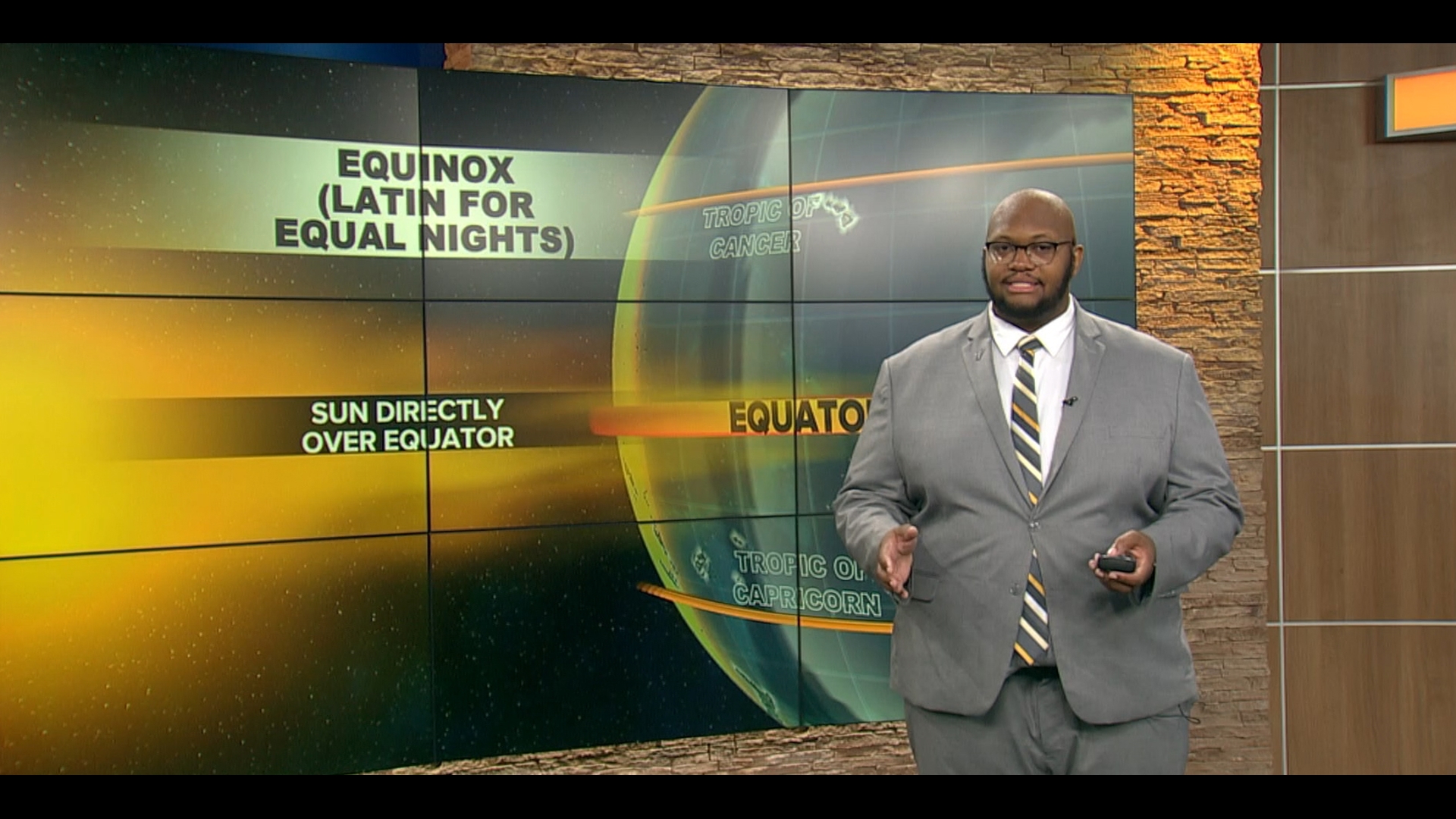TOLEDO, Ohio — The crisp fall days and cooler weather will be approaching soon, with sunsets getting earlier as we lose daylight further into the season and following winter months.
In the world of meteorology, we mark the beginning of fall as Sept. 1, but many still consider Sept. 21 or Sept. 22 as the start of fall. We associate seasons with temperatures, so when we hear the word summer, we think of hot and sunny weather while relaxing by the pool, because on average, that is typically referred to as the hottest time of the year.
It's the same case with winter, which brings to mind brutally cold and cloudy days.
This week in our WTOL 11 Weather Impact, we are exploring how the angle of the sun affects temperatures and much more.
Sun angles through the year
The explanation behind seasons changing is all associated with the sun angle through the year.
Our explanation below shows the different angles we typically see around the summer solstice, winter solstice, and autumn equinox.

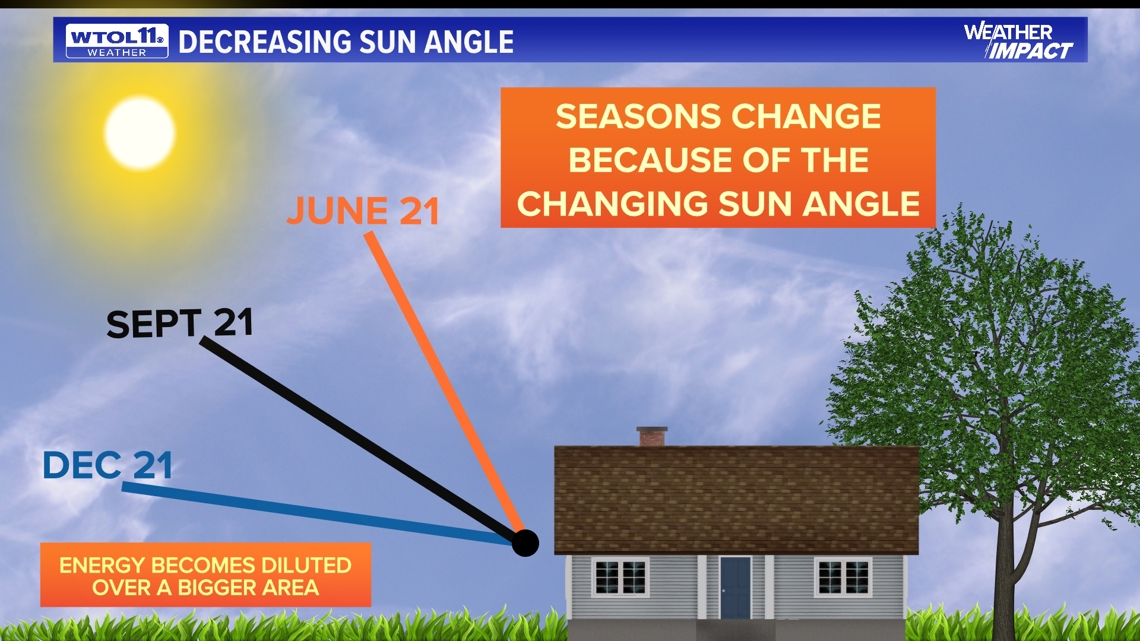
According to Climate Science Investigations, The angle of incoming solar radiation influences seasonal temperatures of locations at different latitudes. When the sun’s rays strike Earth’s surface near the equator, the incoming solar radiation is more direct and nearly perpendicular, or closer to a 90-degree angle. Therefore, the solar radiation is concentrated over a smaller surface area, causing warmer temperatures.
At higher latitudes, the angle of solar radiation is smaller, causing energy to be spread over a larger area of the surface and cooler temperatures. Because the angle of radiation varies depending on the latitude, surface temperatures on average are warmer at lower latitudes and cooler at higher latitudes.
So, a great example would be if you were to put a lamp directly over your head, you notice that you will become hotter over time. If you were to angle it instead the area that is warmed will be great, but the intensity of the heat will not be as warm, eventually resulting in the energy being diluted over a bigger area.
Higher sun angles vs. lower sun angles
One thing we notice that can distinctly separate the seasons is the physical features that we see during each season. Higher sun angles can be associated with the seasons of late spring, summer and early fall.
Typically around the winter months, trees, plants and flowers die off with how cold it is, which is solely based on these outdoor features not getting enough sunlight and vitamin D within trees.
During the late fall and winter months, we truly see the lower sun angles. As we get higher angles, spring snow is more easily melted by the harsher sun angle. That is why if we get snow in March and April, the result is not as impactful as snow events through the winter.
You will also notice as it gets warmer that you are going to have to start wearing sunscreen at the beginning of the summer. It is easier to get sunburned due to rising sun angles.

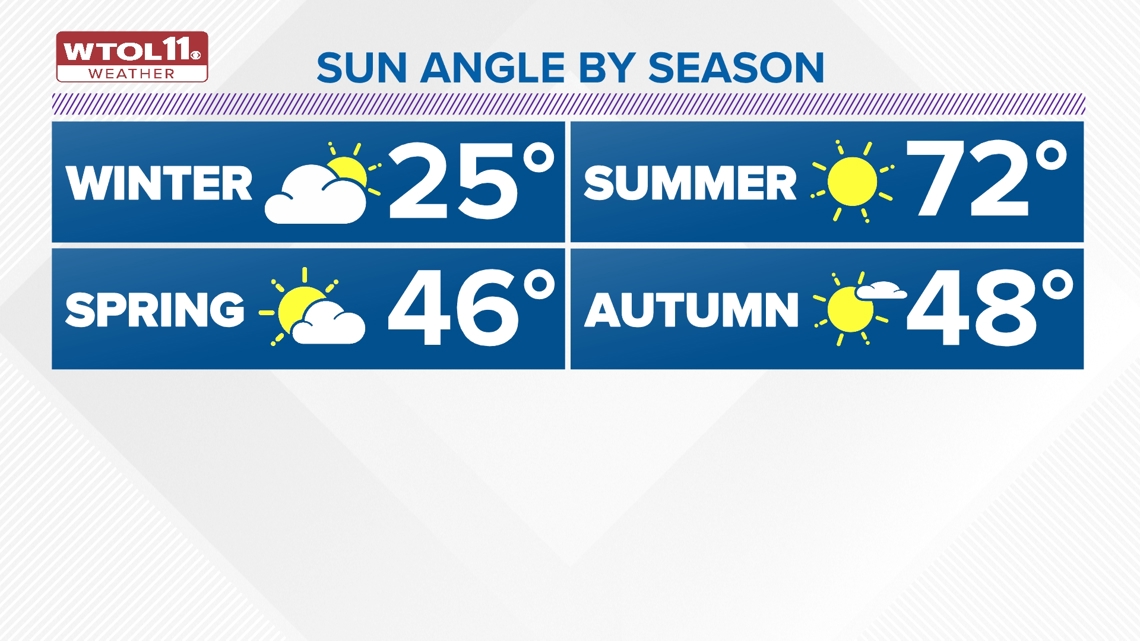
Additionally, longer daylight hours will also occur. During the "Dog Days of Summer," you will notice the longer days, and the opposite happens when we have lower sun angles. Lower sun angle days can be associated with shorter days and much cooler temperatures. So, this is typically when we get those days where sunsets are significantly earlier, and temperatures start to cool off.
One of the factors that is impacted by this is the colors of fall foliage and grass. If you play outdoors, you will notice that grass is a luscious green during the summer months due to the higher sun angle, along with being more concentrated in a certain area.
During the winter months, grass starts to lose its color and that’s where we see the tan-colored grass where the sun angles are more spread out, but not concentrated.

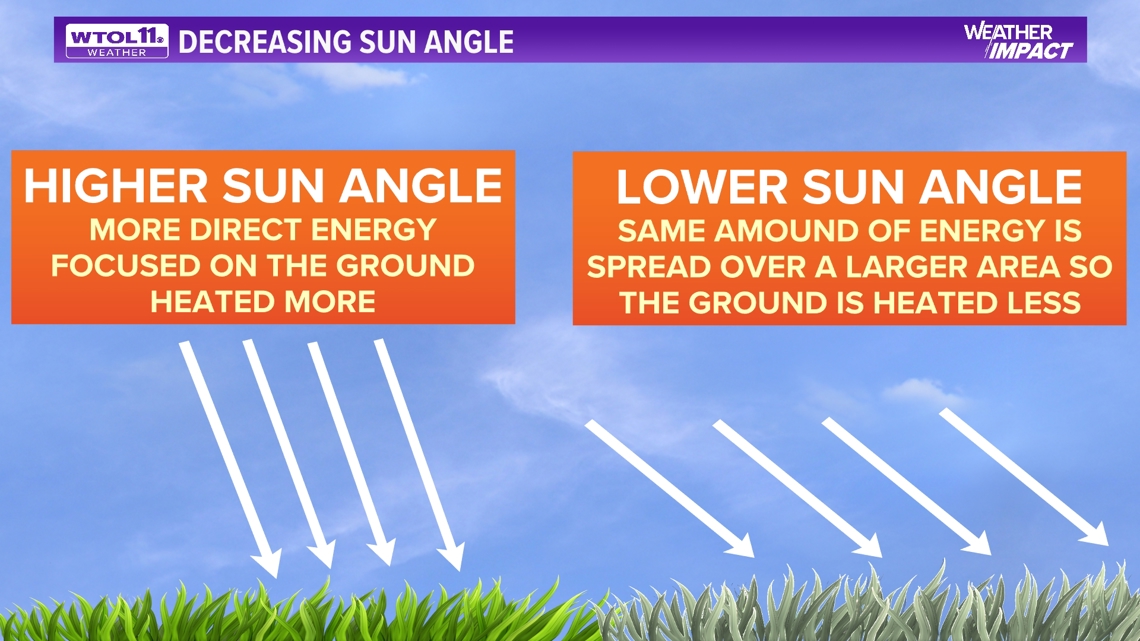
Fall equinox and earlier sunsets
As we get closer to the start of fall, the fall equinox inches closer, which is set to happen at 8:43 a.m. on Sept. 22. This will be the official start of fall.
The word equinox is derived from two Latin words: "aequus," meaning "equal," and "nox," which means "night." At the equator, the sun is directly overhead at noon on these two equinoxes. The "nearly equal" hours of day and night are due to the refraction of sunlight or bending of the light's rays that causes the sun to appear above the horizon when the actual position of the sun is below the horizon.
Additionally, the days become a little longer at the higher latitudes (those at a distance from the equator) because it takes the sun longer to rise and set.

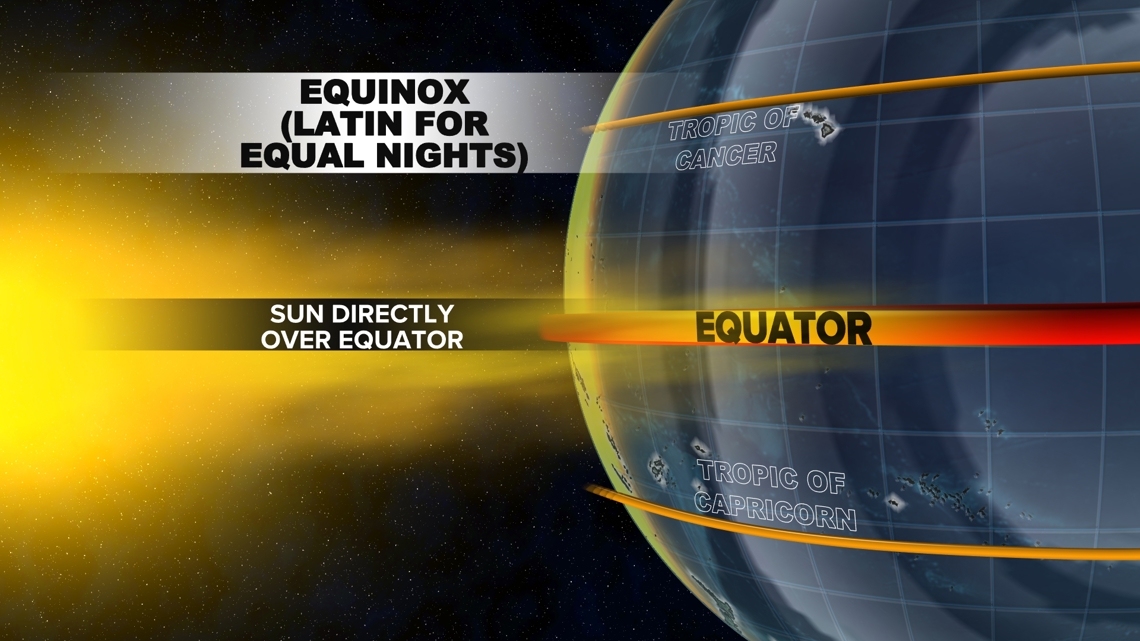
On Sept. 22, sunset will be right at 7:30 p.m. where we will have about 12 hours and 8 minutes of sunlight.
According to the National Weather Service, There is a lag between the longest day of the year and the warmest average temperatures for most mid- and high-latitude locations.
In northern Ohio and northwestern Pennsylvania, the maximum daily temperature occurs three weeks later in mid-July.
Just as the warmest part of the day usually occurs several hours following noon when the sun is highest in the sky, so too does the warmest part of the summer lag behind the summer solstice. This lag is due to the time required for ground and water to heat up. Average temperatures continue to climb until the sun drops lower in the sky.
It may not feel like it, but in the three months since June 21, which was our longest day of sunlight, we have lost about 3 hours and 14 minutes of sunlight.
This is going to continue well into September, October and November as sunset times approach 6 p.m. and 5 p.m. with the loss of daylight.

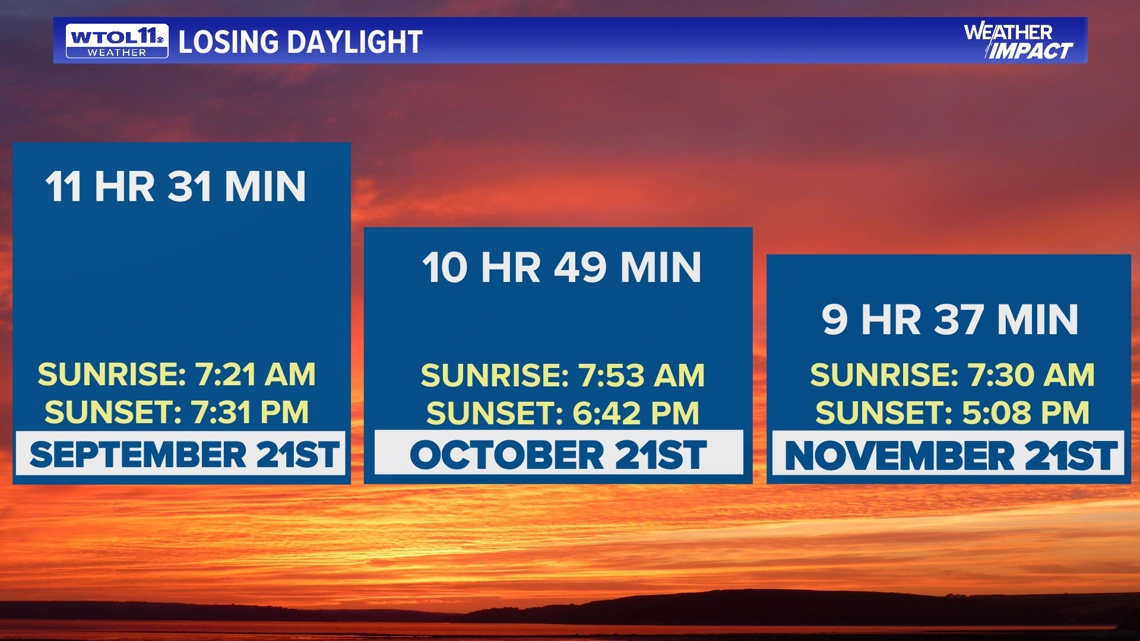
Impacts on your health
Throughout the year, there are times when can get too much sun and also not enough sun.
During the summer, if you spend too much time in the sun, you can run the risk of getting sunburned or even heat-related illness.
During the winter here in northwest Ohio, there are several days when we simply do not get enough sun or vitamin D with how much lower the sun angle is.
During the upcoming fall and winter months, it is key to spend at least 20 minutes outside to get the proper vitamin D. You can also get the proper amount of vitamin D by eating eggs, mushrooms and even drinking orange juice.

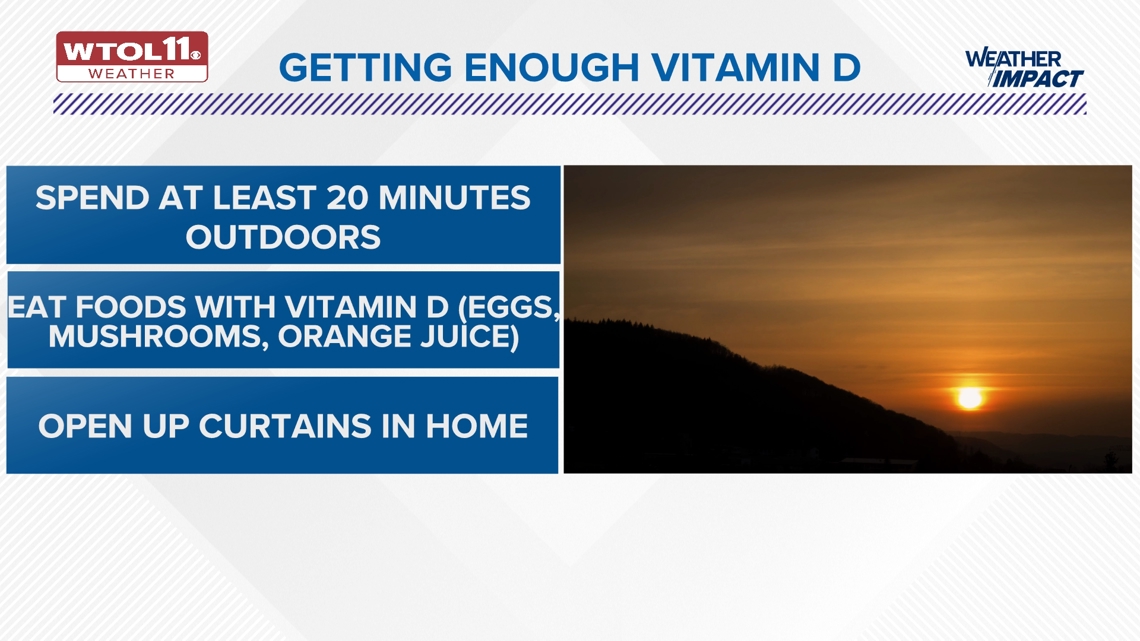
According to the National Institute of Health, vitamin D is a nutrient you need for good health. It helps your body absorb one of the main building blocks for strong bones. Together with calcium, vitamin D helps protect you from developing osteoporosis, a disease that thins and weakens the bones and makes them more likely to break. Your body needs vitamin D for other functions, too.
Sun angle plays a big part in our lives and truly determines what kind of conditions to expect outside throughout the year and how they coincide with our four seasons.
MORE FROM WTOL 11 WEATHER IMPACT:

